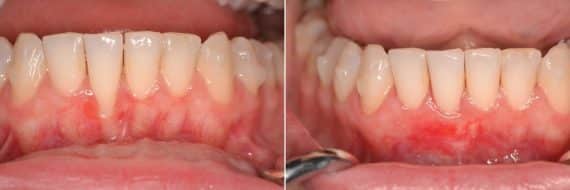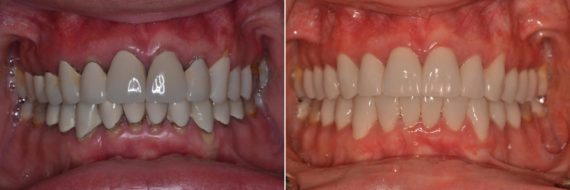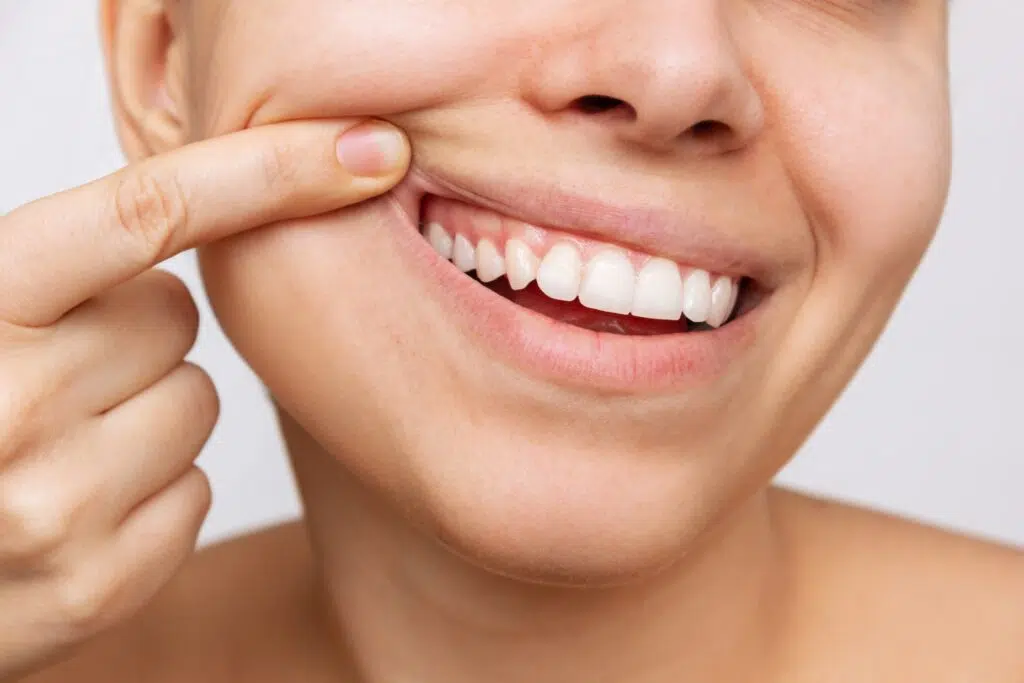
Yes, gum disease can be reversed—but only in its earliest stage, known as gingivitis. At this stage, the damage is still limited to gum inflammation without any permanent bone or tissue loss. With proper care and timely treatment, gingivitis can be completely resolved, restoring your oral health.
Have you ever noticed your gums bleeding when brushing or flossing? That could be your body’s early warning signal. Gum disease affects millions of people and often goes unnoticed until it progresses to a more serious condition. But here’s the good news: if caught early, it doesn’t have to be permanent.
Understanding how gum disease develops and recognizing the signs early can mean the difference between a simple cleaning and more invasive procedures. In this article, we’ll break down what gum disease is, how to catch it early, and what you can do to reverse it before it leads to long-term damage.
Periodontal Disease Overview
Gingivitis and periodontitis are the two main stages of gum disease. Gingivitis is the earliest form and involves inflammation of the gums due to plaque buildup. At this stage, the gums may appear red, swollen, and bleed easily during brushing. Fortunately, gingivitis does not involve irreversible damage to the supporting structures of the teeth and can be reversed with proper oral hygiene and professional care.
Periodontitis, on the other hand, is the advanced stage of gum disease. When gingivitis is left untreated, it can progress to periodontitis, which causes the gums to pull away from the teeth, forming pockets that can become infected. This stage involves irreversible damage to bone and connective tissues and requires more aggressive treatment to manage.
Causes and Symptoms of Gingivitis
Gingivitis develops when plaque and bacteria build up on teeth and gums due to poor oral hygiene. However, several other factors can contribute to or worsen this early stage of gum disease. Understanding the root causes can help you take preventive steps and identify potential risks before symptoms become more severe.
Common and Uncommon Causes of Gingivitis
- Poor oral hygiene – Infrequent or improper brushing and flossing allows plaque to accumulate, leading to gum irritation.
- Smoking or tobacco use – Tobacco weakens your immune system, making it harder for gums to heal and stay healthy.
- Hormonal changes – Pregnancy, menstruation, or menopause can increase gum sensitivity and vulnerability to inflammation.
- Diabetes – High blood sugar levels can impair the body’s ability to fight infection, including gum infections.
- Medications – Certain drugs, such as anticonvulsants or blood pressure meds, can reduce saliva flow or cause gum overgrowth.
- Nutritional deficiencies – A lack of vitamin C, for instance, can weaken gum tissue and slow down healing.
- Genetics – A family history of dental problems may predispose someone to gum disease.
- Stress – Chronic stress affects the immune system, reducing your body’s ability to combat gum infections.
- Mouth breathing – Breathing through the mouth, especially while sleeping, can dry out gums and contribute to irritation.
- Crooked teeth or misaligned bite – These can create hard-to-clean areas where plaque builds up easily.
Symptoms of Gingivitis
Recognizing the symptoms of gingivitis early is essential for successful reversal. These signs are often mild at first, making them easy to overlook—but they are your gums’ way of asking for help.
- Red or swollen gums – Inflammation is one of the first visible signs of gingivitis.
- Bleeding when brushing or flossing – Gums that bleed easily are a key indicator of gum irritation.
- Bad breath (halitosis) – Persistent bad breath may signal bacterial buildup beneath the gumline.
- Tender or sensitive gums – Discomfort when eating or brushing could point to underlying inflammation.
- Receding gums – A visible pullback of the gum line may indicate progression from gingivitis to periodontitis.
- Soft or puffy gums – Gums may appear spongy or overly soft to the touch.
- Change in gum color – Healthy gums are pink; gingivitis can cause them to look darker or purplish.

Gingivitis Diagnosis and Tests
Diagnosing gingivitis early is crucial to reversing the condition before it progresses. A routine dental exam is often enough to detect it. Your dentist will check for signs such as bleeding gums, plaque buildup, gum pocket depth, and inflammation. In some cases, X-rays may be used to assess any underlying bone loss.
A periodontal probe—a small dental instrument—is typically used to measure the space between your gums and teeth. Pockets deeper than 3 millimeters may indicate the presence of gum disease. Early diagnosis allows for effective treatment and a return to optimal gum health.
Available Treatments for Periodontal Disease
When it comes to treating periodontal disease, options vary based on the severity of the condition and the patient’s overall oral health. The good news is that many early-stage cases, particularly gingivitis, can be reversed with non-surgical treatments and improved home care. More advanced stages may require surgical procedures to restore stability and prevent further damage.
This section outlines some of the most common and effective treatment methods used to combat periodontal disease. Whether you’re dealing with early inflammation or more significant tissue loss, understanding your options is the first step toward a healthier smile.
Scaling and Root Planing
Scaling and root planing is a non-surgical deep cleaning procedure used to treat early stages of gum disease like gingivitis. The process involves removing plaque and tartar from above and below the gumline (scaling), then smoothing the root surfaces (planing) to help gums reattach to teeth. This reduces inflammation and allows for better oral hygiene moving forward, playing a key role in reversing early gum disease.
Flap Surgery
Flap surgery is a common procedure used to treat moderate to severe periodontal disease. During the surgery, the gums are lifted back to allow deep cleaning of the root surfaces and removal of tartar and bacteria from pockets. The gums are then repositioned for a snug fit around the teeth. This technique helps reduce pocket depth and makes it easier to maintain oral hygiene moving forward.
Soft Tissue Grafts
Soft tissue grafts are used to treat gum recession caused by advanced periodontal disease. During the procedure, tissue is usually taken from the roof of the mouth and grafted onto the affected gum area. This helps to cover exposed roots, reduce sensitivity, and prevent further recession. In addition to improving aesthetics, grafts support better oral health by reinforcing thin or damaged gum tissue, enhancing overall stability and protection.
Bone Grafts
Bone grafts are used when periodontal disease has caused significant bone loss around the teeth. This surgical procedure involves placing bone or bone-like material in areas where the jawbone has deteriorated. The graft promotes natural bone regeneration, providing support for the teeth and improving overall oral stability. Bone grafts are often used alongside other periodontal treatments to restore a strong foundation and increase the success of future dental procedures like implants.
Medications
Medications are often used alongside dental procedures to control infection and manage gum disease. Antiseptic mouthwashes like chlorhexidine help reduce bacteria in the mouth and support healing after treatments. Antibiotics, either oral or topical, may be prescribed for more severe infections or advanced periodontitis. Additionally, anti-inflammatory pain relievers can be used to reduce swelling and discomfort, improving the patient’s comfort throughout the healing process.
Before & After Photos


* All patients are unique and individual results may vary.
Choosing the Best Dentist for Your Treatment
Choosing the right dental professional for treating gum disease isn’t just important—it’s critical. Periodontal procedures require a deep understanding of gum health, precision techniques, and access to the latest technology. Without the right care, even reversible conditions like gingivitis can progress to permanent damage.
With an unwavering dedication to the field of periodontics, Dr. John Paul Gallardo, DDS, PA stands as South Florida’s leading periodontist and implant specialist. With over 25 years of experience, Dr. Gallardo is known for his meticulous attention to detail and for achieving life-long results. At Gallardo Periodontics and Implant Dentistry, patients benefit from a state-of-the-art facility, cutting-edge technologies, and IV conscious sedation for a relaxed treatment experience. Call us today at 305-447-1447 or visit our contact page to schedule your dental appointment.
Common Questions About Gum Disease
Is gum disease contagious?
Gum disease itself is not contagious in the way a cold or flu is, but the bacteria that cause it can be transmitted through saliva. Sharing utensils, kissing, or other close contact can pass these bacteria between people. While this doesn’t guarantee the development of gum disease, it does increase the risk, especially in individuals with poor oral hygiene or weakened immune systems.
Can vaping cause gum disease?
Yes, vaping can contribute to gum disease. Although it is often marketed as a safer alternative to smoking, vaping still exposes the mouth to nicotine and other chemicals that reduce blood flow to the gums. This can impair the healing process, increase inflammation, and make the gum tissue more susceptible to infection. Over time, these effects can accelerate the development of gum disease, even in younger users.
When is it too late to reverse gum disease?
It becomes too late to reverse gum disease once it progresses from gingivitis to periodontitis. At that point, the damage to the bone and connective tissues supporting the teeth is permanent. While periodontitis can be managed to prevent further harm, it cannot be undone. This is why early diagnosis and treatment are critical for preserving long-term oral health.
How do you prevent gum disease?
Preventing gum disease starts with maintaining excellent oral hygiene. This includes brushing twice a day with fluoride toothpaste, flossing daily, and using an antibacterial mouthwash to reduce plaque buildup. Regular dental checkups and cleanings are also key in catching early signs of gingivitis before they progress.
In addition to hygiene, lifestyle choices play a major role. Avoiding tobacco products, managing stress, eating a balanced diet, and staying hydrated all contribute to healthier gums and a lower risk of developing gum disease.
Can gum disease cause headaches?
While gum disease is not a direct cause of headaches, the two can be related. Chronic inflammation from gum infections can contribute to systemic stress and tension in the jaw or facial muscles, which may trigger tension-type headaches. In advanced cases, gum disease-related pain or tooth infection may radiate to other areas of the head, creating discomfort that feels similar to a headache.
